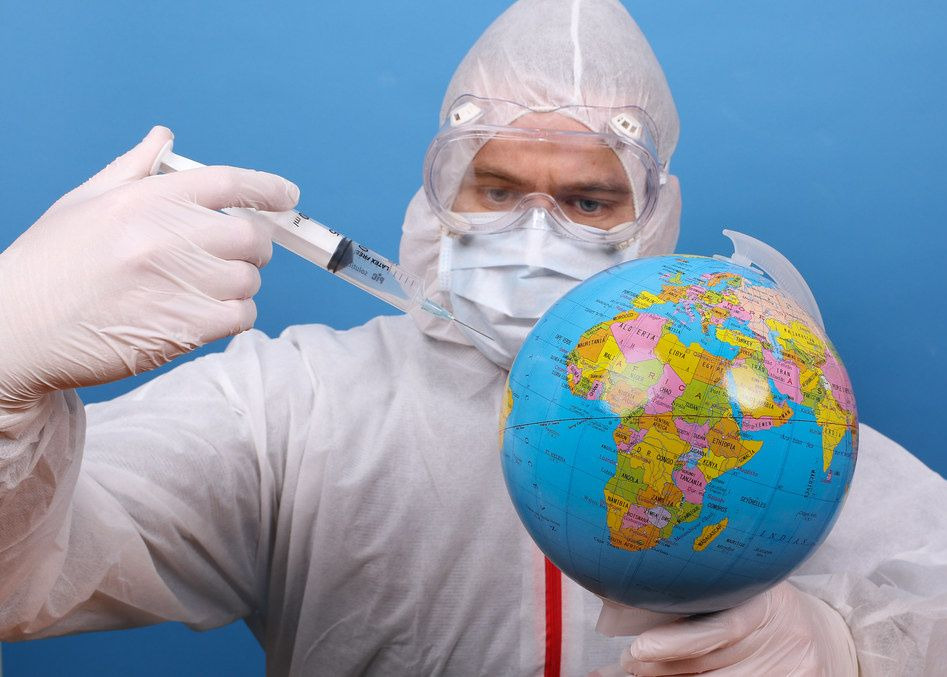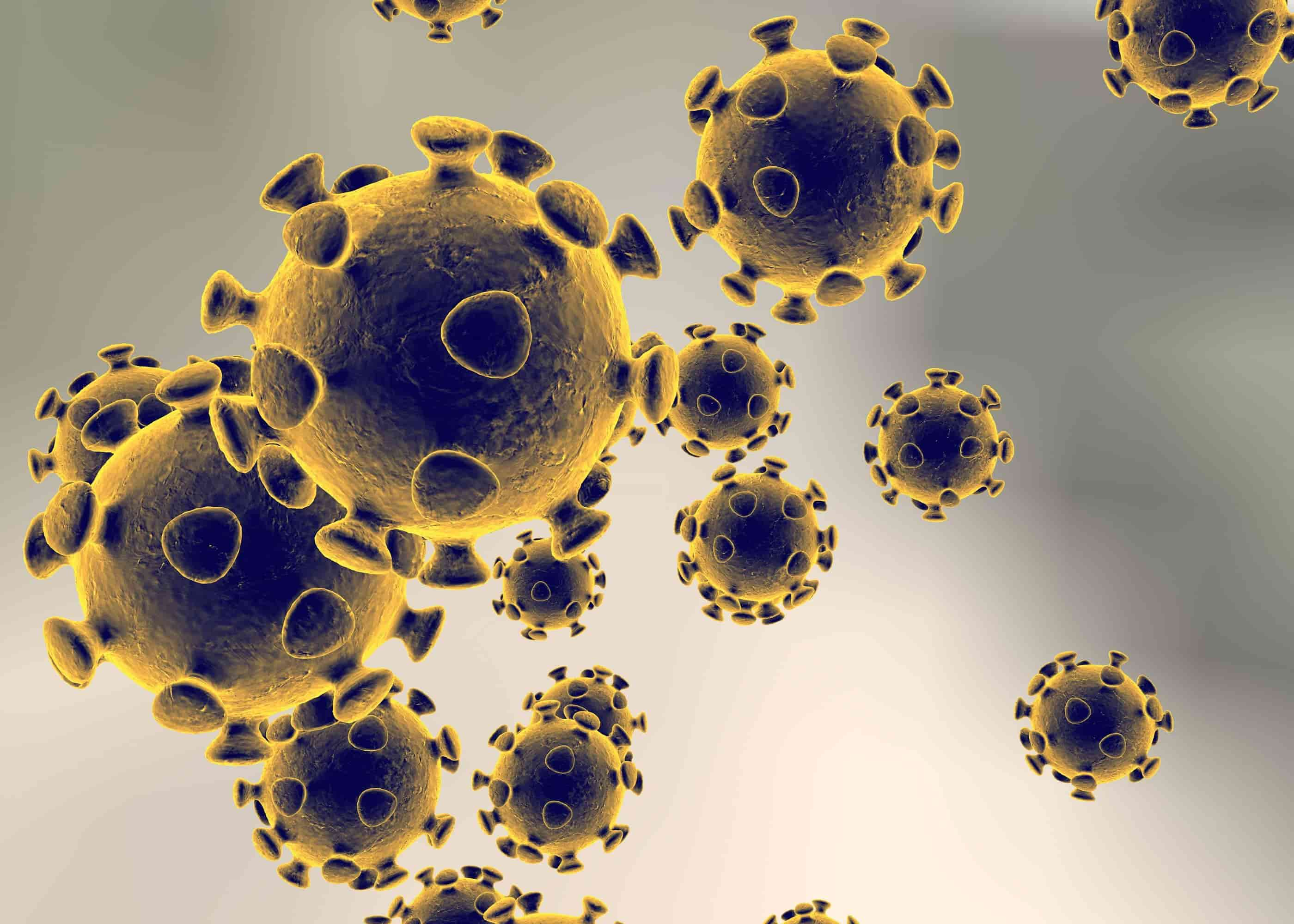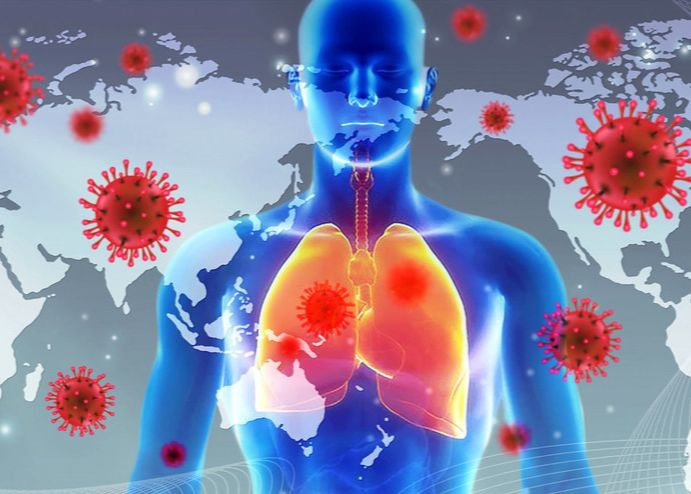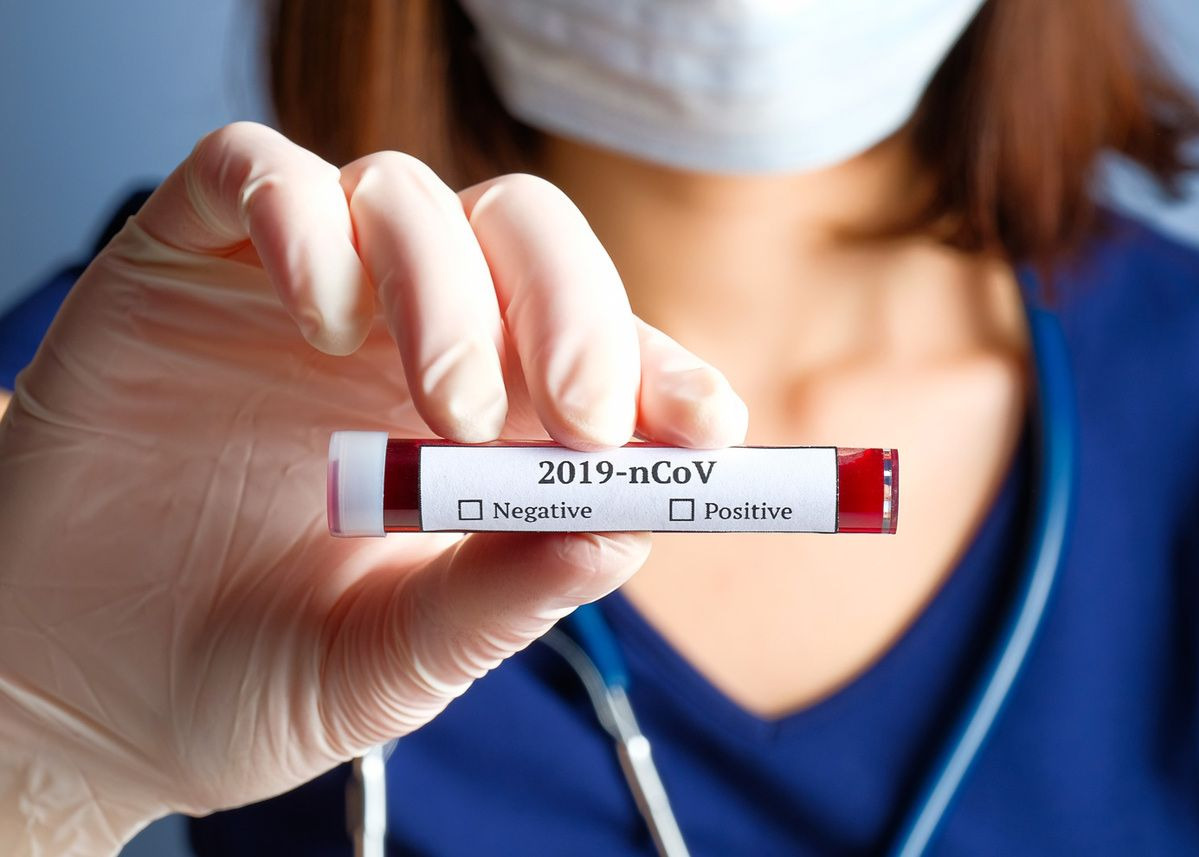3.9.2020
The development of COVID-19 vaccines is a race in which many aspects need to be considered – for example, how a vaccine that requires cold storage would work in practice around the world. Simon Mügge, PhD (Biochemistry) and European Patent Attorney, writes in his blog about different options for COVID-19 vaccine development. Intellectual property rights are the engine of development work, as they ensure that the results of long-term R&D investments can also be exploited.
The spread of COVID-19 is still increasing rapidly, and new cases are reported daily around the world. According to the WHO, there are more than 25.6 million confirmed cases of COVID-19 and 852,758 deaths worldwide (as of September 3, 2020). At present, complying with hygiene rules, early detection and the quarantine of infected individuals are the only known preventive measures to stop further spreading of the disease.
While certain regions in the world are still suffering from the first wave of infections, other regions are concerned about the effects of a possible second wave on both, public health and the economy. Since also infected individuals, who are not experiencing any symptoms, were shown to spread the virus, a safe an effective vaccine is urgently required to bring the coronavirus pandemic to a halt. Consequently, the race is on for search of such a preventive vaccine.
Currently, there are more than 100 COVID-19 vaccine candidates under development, and the website clinicaltrials.gov lists 19 different drug trials already underway to test COVID-19 vaccines. The following article provides a glimpse into the challenges, advances, and opportunities in vaccine formulation.

Whole-pathogen vaccines are most potent – but probably also most risky
Various types of vaccine candidates are known, all of which provide certain advantages and disadvantages. One traditionally used type are whole-pathogen vaccines. These type of vaccines comprise whole virus which are presented to the recipient’s immune system, which virus is either live-attenuated (a live virus pathogen, which has been rendered less contagious; or an isolated weak strain of the virus) or inactivated using heat and/or chemicals. This type of vaccine is for example used in measle or polio vaccines.
Live-attenuated vaccines trigger a mild infection in the recipient, which trains the recipient’s immune system against the stronger, natural virus. While inactivated whole-pathogen vaccines are considered being safer, they are less effective in training the immune system as compared to live-attenuated whole pathogen vaccines. However, whole-pathogen vaccines at some point require the handling of live virus, and defects in the manufacturing process may – in a worst-case scenario – cause a new disease outbreak.
Whole-virion inactivated SARS-CoV-2 vaccines are currently undergoing phase 1 and phase 2 clinical trials (clinical trial NCT04471519, NCT04352608, ChiCTR2000032459, ChiCTR2000031809). The studies are scheduled to be completed between December 2020 and November 2021.
New generation vaccines present only selected parts of the pathogen for recognition by the immune system
As an alternative to whole-pathogen vaccines, other types of vaccines have been developed, which only triggers the recipient’s immune system using selected parts of the virus. These parts are either presented in form of a protein, or they are delivered to the recipient in form of polynucleotides (DNA or RNA). These polynucleotides encode the protein, such that the protein is produced in the body of the recipient, where it then can be presented to cells of the immune system.
However, this type of vaccine requires intensive development by selecting the right protein, the optimal formulation for storage and delivery, and/or the right selection of an adjuvant – a further component of a vaccine required to render the recognition of the protein by the immune system more potent. This new generation type of vaccine is for example used in vaccines against Hepatitis and the flu.
The development of a new-generation vaccine usually starts with the selection of the protein antigen of the pathogen (here SARS-CoV-2) to be presented to the recipient’s immune system. SARS-CoV-2, the causative pathogen of COVID 19, has four main structural proteins: the spike (S) protein, nucleocapsid (N) protein, envelope (E) protein, and membrane protein (M). Since the S protein plays a critical role when entering a host cell required for virus replication in the infected person, most COVID-19 vaccine candidates are designed to present parts of the S protein to the recipient’s immune system, in particular the so called receptor-binding domain which attaches to the cell’s ACE-2 receptor.

While currently tested vaccines induce the formation of antibodies, controlled clinical trials must demonstrate safety and efficacy
At the same time, recent research suggests that SARS-CoV-2 also binds and enters the cell by interacting with other surface molecules, TMPRSS2 and CD147. Accordingly, while one would probably expect any of the vaccines being directed to the receptor binding domain of the S protein to cause the development of antibodies which will likely inhibit binding to the ACE-2 receptor, it is not granted that this immune response inevitably completely neutralizes SARS-CoV-2 infection, as the ACE-2 receptor is only one way how SARS-CoV-2 enters a cell.
Moreover, in a study reporting 75 patients with SARS (caused by the similar coronavirus SARS-CoV), it was found that the recovered patients showed increased or increasing levels of antibodies directed against the S-protein and the N protein, whereas the titer of N-antibodies in non-survivors was low, and the titer of anti-S antibodies decreased rapidly after the peak, and such observation is similarly observed in severe cases of COVID-19. Accordingly, while it is encouraging to learn that several currently tested vaccines induce the formation of antibodies, it still is to be proven that these vaccines indeed induce immunity against COVID-19.
Finally, vaccines can also trigger an effect referred to as antibody-dependent enhancement (ADE). ADE describes the situation wherein a virus-bound antibody facilitates cellular uptake of the virus-antibody-complex into the cell via antibody binding Fc-receptors. Following internalization, the virus is not neutralized or killed, but replicates, and/or kills or stimulates the target cell, thereby causing more inflammation and damage. Therefore, controlled clinical trials are also essential to ensure safety and efficacy of the vaccine.
Several type of new generation vaccines are currently tested in clinical trials
Furthermore, new-generation vaccines usually require an adjuvant. Depending on the selection of the adjuvant, the triggered immune reaction in the recipient can be biased towards a humoral immune response (primarily triggering the production of neutralizing antibodies) or a cellular immune response (triggering the development of immune cells, which recognize and kill virus-infected cells). Presumably, adjuvant promoting a cellular immune response would be preferable in case of a virus-infection such as in case of COVID-19.
The clinical trial NCT04368988 (study completion in July 2021) uses full length S protein formulated in a nanoparticle adjuvanted with Matrix M, which formulation was previously proven successful in developing other anti-viral vaccines. Another study (NCT04498247, completion expected in March 2022) uses a genetically engineered measles virus to present SARS-CoV-2 protein to the recipient’s immune system.
DNA and/or RNA vaccines may have the advantage that the DNA or RNA molecule itself can - under certain circumstances - function as an adjuvant by activating the innate immune system via Toll-like receptors (TLRs) or intracellular PAMP receptors such as Mda-5 or RIG-I.
For a better entry into the cell, the mRNA is usually formulated in lipid nanoparticles. Clinical trials using messenger RNA encoding the S protein are currently carried out (NCT04283461, NCT04368728, NCT04515147, NCT04449276). The estimated completion of these studies is between August and November 2021.
DNA has the advantage of a higher stability as compared to RNA, in particular when present in a circular vector (DNA-ring), and this approach is followed in another clinical trial (NCT04336410, estimated completion July 2021; NCT04447781, estimated completion February 2022).
The naked DNA vector can advantageously be administered by injection into the skin followed by electroporation (electric stimulation of the skin to promote entry of the DNA into the cell). Still another approach uses viral DNA vectors, which can be packaged in cells into recombinant (artificially produced), non-pathogenic virus. Such an approach is described in the patent literature using Adenovirus and mVSV virus systems (CN111088283, CN110974950), and currently undergoes clinical phase 2 (ChiCTR2000031781, estimated completion end of January 2021; NCT04324606, estimated completion in May 2021; and NCT04400838, estimated completion in August 2021; NCT04444674, completion in December 2021).

Future challenges in vaccine formulation provide further opportunities
Development of an effective and safe vaccine against COVID-19 is not easy, but manufacture of the high required amounts, distribution and administration to the public will become challenging as well. In all types of vaccines, scaling-up of the production must be balanced between costs and quality.
Moreover, the currently developed COVID-19 vaccines are in liquid form. Consequently, they are not very thermostable but require refrigerated storage between +2 and +8 C. Maintaining vaccines in an intact cold chain can proof challenging, when considering the various conditions in the different regions around the world. Such obstacles could possibly be overcome by formulating the vaccine as a lyophilized (dry-frozen) product. However, this again requires research in developing a formulation which protects the vaccine component during the lyophilization process and its reconstitution with water or buffer solution. In addition, there are concerns that the vaccine can become contaminated or incorrectly diluted during the reconstitution step.
Apart thereof, all vaccines under clinical trial are currently formulated for parenteral administration, in particular intravenous infusion. It would certainly be advantageous to develop a vaccine, which can be directly administered to the regions having the highest risk of infection, i.e. a vaccine for intranasal administration by way of a nose spray, or by administration as an aerosol using an inhalator. Accordingly, the current situation also provides opportunities for further and improved developments.
Can existing vaccines be the key to immunity against COVID-19?
Finally, one may also mention a third basic type of vaccines, namely the trained immunity-based vaccines. This type describes vaccines, which are not directly aimed at the pathogen at issue, but which are known to boost the immune system against a broad range of unrelated infectious agents.
In the context of COVID-19, there are several clinical trials ongoing, which evaluate the Bacille Calmette-Guerin (BCG) vaccine for its ability to induce immunity against COVID-19 (inter alia, NCT04327206, NCT04348370, NCT04350931, NCT04414267). BCG vaccine is commonly used in the prevention of tuberculosis disease (also a lung disease), and researchers have postulated a positive correlation between BCG vaccination and a reduced number of severe cases of COVID-19. The above-mentioned studies are scheduled to be completed between January 2021 and March 2022.

Development of a safe and efficient vaccine takes time
Some media and politicians seem to suggest that vaccine development is a straight-forward process, and the distribution of a COVID-19 vaccine is just imminent. However, in view of the foregoing and the above listing of clinical trials, it must be assumed that solid data from phase 2 studies is not to be expected before early 2021. Notably, none of the above vaccines has entered clinical phase 3 studies yet. Even after a first vaccine may have been found useful in the prevention of COVID-19, further research will be required to up-scale the manufacturing process, provide improved formulations, improved production processes, and improved ways of administration.
In this vaccine race, intellectual property rights ensure that the high financial efforts of investors are rewarded in case of success, and that opportunities can be taken. It follows that intellectual property rights are a driver of innovation of COVID-19 vaccines and treatments.
Kolster supports companies in the development of vaccines with a team of experts in the field of life science and process engineering. Kolster assists in taking innovation-driven opportunities in Finland and Europe, and - in cooperation with its trusted partners - world-wide. In case of interest, we are happy to evaluate with you how Kolster’s service can be of value to your business.
Get to know Kolster's biotech and chemistry team.
Simon Mügge
German & European Patent Attorney, European Trademark and Design Attorney
simon.mugge@kolster.com
+358 40 920 8814
Simon Mügge is a qualified European Patent Attorney and German Patent Attorney, and holds a doctorate in biochemistry, specializing in immunology. He has a strong scientific background and more than ten years of experience in IPR in Germany before transferring to Kolster’s Biotech and Chemistry team in November 2019. At Kolster, he drafts and prosecutes applications before the European Patent Office (EPO) and the German Patent and Trademark Office (DPMA), and is experienced in post-grant opposition and appeal proceedings on both the generics companies’ and originators’ side. He is involved in opposition cases of Polpharma/Sandoz acting against Biogen, and in defending patents of Rigontec/Merck. Simon Mügge was awarded the Managing IP ‘Rising Star’ award in 2018 and 2019.
READ MORE
Coronavirus vaccine creates unique global cooperation in drug development
